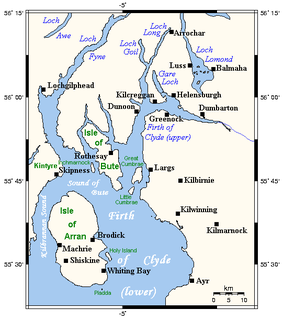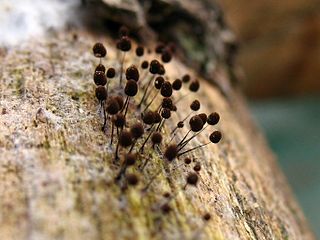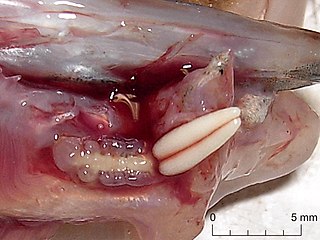Related Research Articles

The Islands of the Firth of Clyde are the fifth largest of the major Scottish island groups after the Inner and Outer Hebrides, Orkney and Shetland. They are situated in the Firth of Clyde between Ayrshire and Argyll and Bute. There are about forty islands and skerries, of which only four are inhabited and only nine larger than 40 hectares. The largest and most populous are Arran and Bute, and Great Cumbrae and Holy Island are also served by dedicated ferry routes. Unlike the four larger Scottish archipelagos, none of the isles in this group are connected to one another or to the mainland by bridges.

The Firth of Clyde is the mouth of the River Clyde and the deepest coastal waters in the British Isles, sheltered from the Atlantic Ocean by the Kintyre peninsula which encloses the outer firth in Argyll and Ayrshire. The Kilbrannan Sound is a large arm of the Firth of Clyde, separating the Kintyre Peninsula from the Isle of Arran. Within the Firth of Clyde is another major island – the Isle of Bute. Given its strategic location, at the entrance to the middle/upper Clyde, Bute played a vitally important military (naval) role during World War II.
Tantulocarida is a highly specialised group of parasitic crustaceans that consists of about 33 species, treated as a subclass of the class Hexanauplia. They are typically ectoparasites that infest copepods, isopods, tanaids, amphipods and ostracods.

Comatricha is a genus of Amoebozoa. As of 2015, Index Fungorum includes 39 species in the genus.
Syndinium is a cosmopolitan genus of parasitic dinoflagellates that infest and kill marine planktonic species of copepods and radiolarians. Syndinium belongs to order Syndiniales, a candidate for the currently uncultured group I and II marine alveolates. The lifecycle of Syndinium is currently not well understood beyond the parasitic and zoospore stages.

Phyllidia is a genus of sea slugs, dorid nudibranchs, shell-less marine gastropod molluscs in the family Phyllidiidae.
Calocalanus elegans is a species of calanoid copepod in the family Paracalanidae. It is found in Europe.

Ophiocomina nigra, commonly known as the black brittle star or black serpent star, is a species of marine invertebrate in the order Ophiurida. It occurs in the north-eastern Atlantic Ocean, the North Sea and the Mediterranean Sea.
Cyclops elegans is a freshwater copepod species in the genus Cyclops.
Pennella is a genus of large copepods which are common parasites of large pelagic fishes. They begin their life cycle as a series of free-swimming planktonic larvae. The females metamorphose into a parasitic stage when they attach to a host and enter into its skin. The males are free swimming. Due to their large size and mesoparasitic life history there have been a number of studies of Pennella, the members of which are among the largest of the parasitic Copepoda. All species are found as adults buried into the flesh of marine bony fish, except for a single species, Pennella balaenopterae which can be found in the muscles and blubber of cetaceans and occasionally other marine mammals, and is the largest species of copepod.

Acanthochondria limandae is a species of copepods in the genus Acanthochondria. They are host-specific ectoparasites of two species of flatfish: the common dab and the European flounder. They attach themselves to the bases of the gill arches of their hosts. They can infest as much as 2 to 30% of fish in a given population.
Centropages elegans is a marine species of copepods in the genus Centropages.
Cyartonema elegans is a species of free-living marine nematode in the genus Cyartonema found in Scotland.
Crella elegans is a species of marine demosponges in the family Crellidae found in the Adriatic. It is the type species of its genus. It is the host of the ectoparasitic copepod Cryptopontius capitalis.
Cryptopontius capitalis is a species of copepods in the family Artotrogidae from the North Atlantic Ocean. It is an ectoparasitic on the sponges Crella (Crella) elegans, Oscarella lobularis and Petrosia (Petrosia) ficiformis.

Cyclopinodes elegans is a species of marine copepods in the family Cyclopinidae. It is found in Scotland.

John Robertson Henderson CIE FRSE FZS FLS was a Scottish zoologist who specialized in the taxonomy of marine crustaceans, particularly the decapods, and worked on specimens collected by the oceanic research vessels Investigator and Challenger. From 1892 until 1911 he was Professor of Zoology at Madras Christian College in India. From 1908 to 1920 he was Superintendent of the Government Museum in Madras. He also took an interest in numismatics and Indian history.

Hydrichthys sarcotretis is a species of colonial marine hydrozoans now included in the family Pandeidae. The polyps of members of this genus are parasitic and attach themselves to a fish. H. sarcotretis is a species that exhibits hyperparasitism by attaching itself to a copepod, itself the parasite of a fish.
Stigmatopora nigra, also known as the wide-bodied pipefish is a species of marine fish belonging to the family Syngnathidae. This species can be found in the shallow waters, bays, and estuaries of southern Australia from Shark Bay to Brisbane, Tasmania, and New Zealand. They often inhabit seagrass or algae beds in addition to bare sand. Their diet consists of small crustaceans such as copepods and amphipods. Adult brooding males have been measured at 6.5-7 centimeters. Reproduction occurs through ovoviviparity. in which the males brood up to 25 eggs in a pouch below the tail before giving live birth. Stigmatopora nigra can live to 150 days old and are able to reproduce throughout the year.